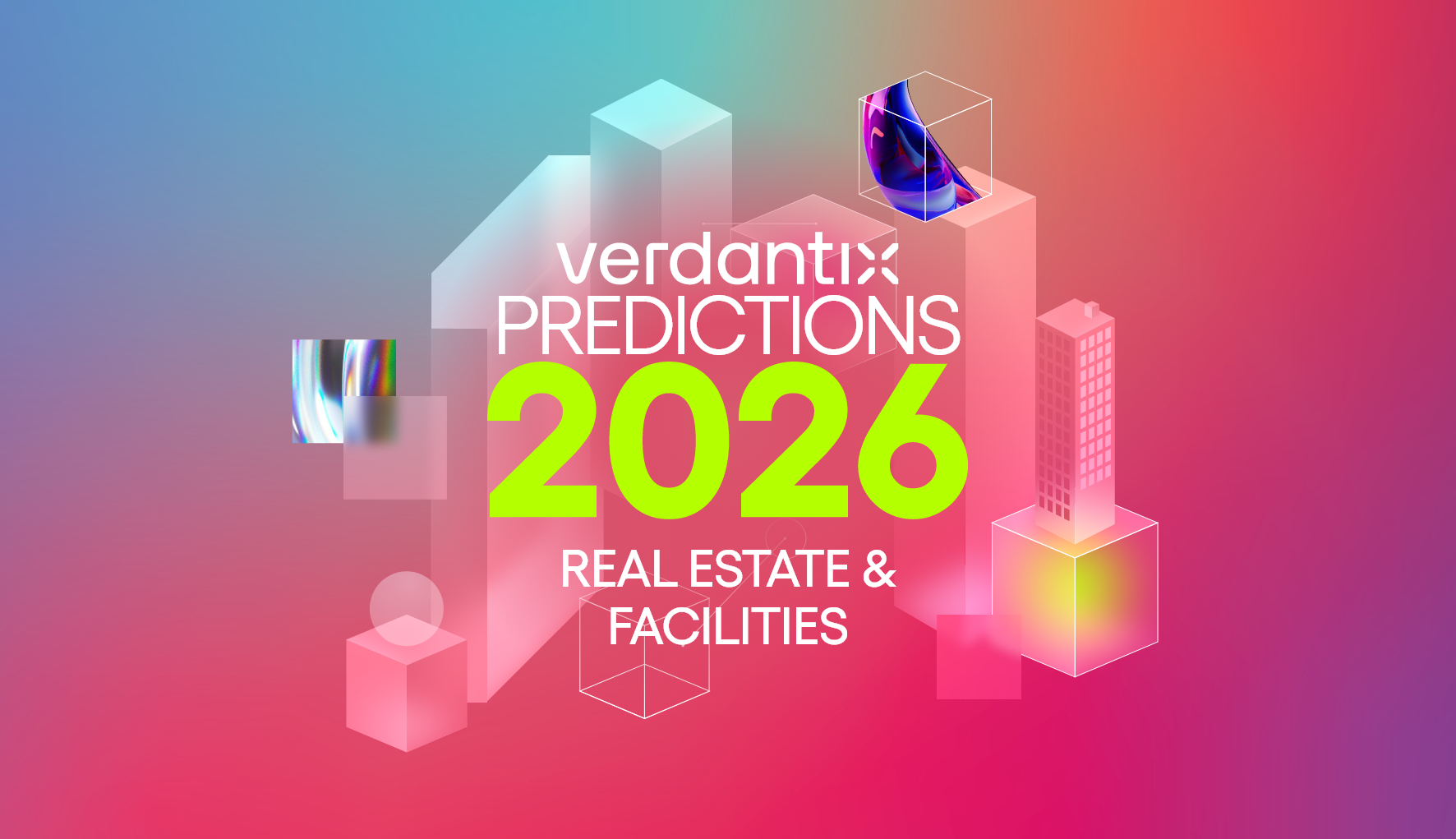Global Corporate Survey: Real Estate Technology Budgets, Priorities & Preferences For 2025
Access this research
Access all Real Estate Leaders content with a strategic subscription or buy this single report
Need help or have a question about this report? Contact us for assistance
Executive Summary
As market conditions stabilize after a period of turbulence, real estate and facilities professionals can resume planning, tackling and balancing a range of short- and long-term priorities – such as decarbonization, improving operational efficiency, and adapting workspaces for hybrid and flexible working. Verdantix surveyed over 300 real estate and facilities executives to assess how priorities, objectives and technology investment plans are expected to unfurl in 2025. Product and service providers can use this report to understand market sentiment, while other real estate and facilities readers can compare their firms’ objectives and technology plans with their peers.The eighth Verdantix real estate and built environment survey
Methodology
Headwinds and turbulence ease, rebuilding confidence in real estate planning
Sustainability emerges once again as the leading market trend, amidst diverse industry shifts
Firms prioritize improving occupant experience, despite feeling the effects of sustainability more
Firms are prioritizing amenities, resiliency and sustainability in their portfolio strategies
Business growth, resiliency and the flight to quality are driving portfolio initiatives
Regulations, reporting and resiliency prompt action on sustainability and ESG
Businesses juggle a range of important initiatives for their properties and their people
Property: firms move to bullet-proof and future-proof their buildings
People: adapting space to prove the worth of real estate and workspaces
Spending: momentum of post-crisis spending resurgence continues
The battleground of point solutions vs all-in-one
Software spending revival continues into 2025
Figure 2. Respondents are located in six broad regions, with a large portion in Europe and North America
Figure 3. Respondents come from 13 industries
Figure 4. Sustainability and occupant experience lead in terms of the most impactful market trends
Figure 5. Real estate management priorities over the next three years
Figure 6. Corporate real estate portfolio initiative plans over the next year
Figure 7. Reporting takes centre stage amongst sustainability-related initiatives
Figure 8. Software plans to support sustainability data management and reporting
Figure 9. Climate risks are shaping real estate acquisition decisions for firms
Figure 10. Firms plan to bolster their security and double down on their energy efficiency projects
Figure 11. Low-cost, high-impact projects are attracting the biggest investment increases
Figure 12. Cost saving is the primary driver for investments in building energy efficiency projects
Figure 13. Businesses are planning to expand or replace their software across a range of property-level use cases
Figure 14. Firms set their sights on improving space utilization, over wellbeing
Figure 15. Executives are investing in space monitoring and planning tools to support space utilization optimization initiatives
Figure 16. Software strategies vary, with most firms opting for a few solutions with broad functionality
Figure 17. Organizations are roughly evenly split, with point solutions and integrated solutions across use cases
Figure 18. The investment recovery in key smart building technologies continues into 2025
About the Authors

Ben Readman
Industry Analyst
Ben is an Industry Analyst covering the real estate sector, with a focus on data centres and hotels. His core research covers more than 100 vendors in the energy efficiency, s...

Joy Trinquet
Senior Analyst
Joy is a Senior Analyst at Verdantix, specializing in real estate, facilities and workplace technology, with a particular focus on integrated workplace management systems/conn...
View Profile
Claire Stephens
Research Director
Claire Stephens is a Research Director at Verdantix, leading research into technologies and services shaping the real estate and the built environment, encompassing ...
View Profile







